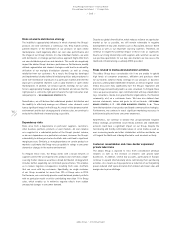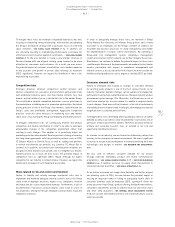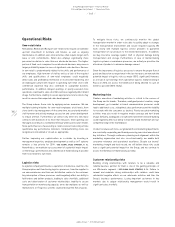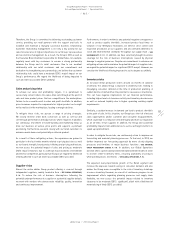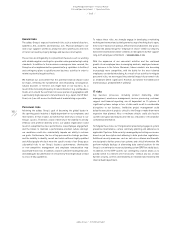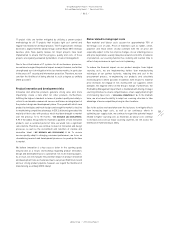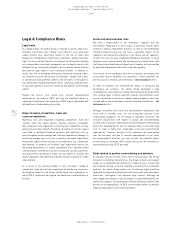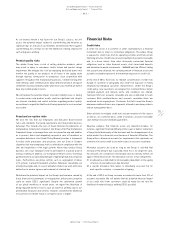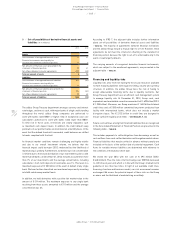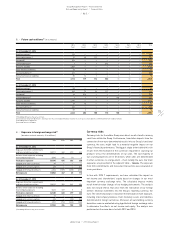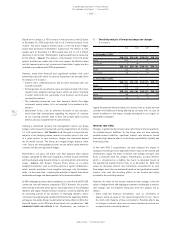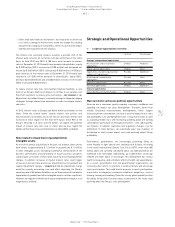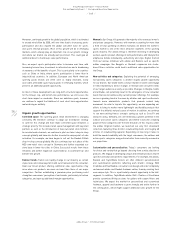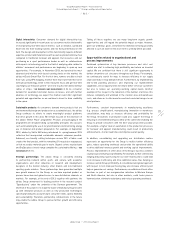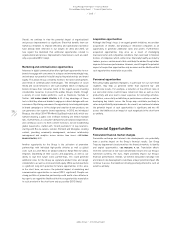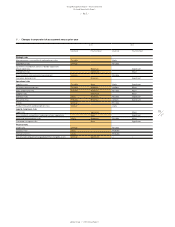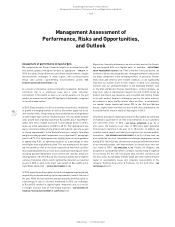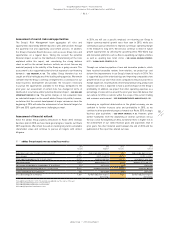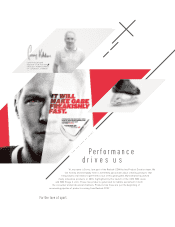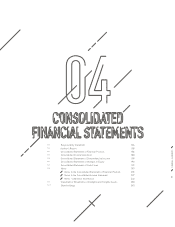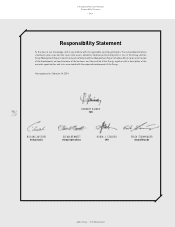Reebok 2013 Annual Report Download - page 178
Download and view the complete annual report
Please find page 178 of the 2013 Reebok annual report below. You can navigate through the pages in the report by either clicking on the pages listed below, or by using the keyword search tool below to find specific information within the annual report.
adidas Group
/
2013 Annual Report
Group Management Report – Financial Review
174
2013
/
03.5
/
Risk and Opportunity Report
/
Financial Risks
Based on this analysis, a 10% increase in the euro versus the US dollar
at December 31, 2013 would have led to a € 2 million increase in net
income. The more negative market values of the US dollar hedges
would have decreased shareholders’ equity by € 176 million. A 10%
weaker euro at December 31, 2013 would have led to a € 3 million
decrease in net income. Shareholders’ equity would have increased by
€ 214 million
/
TABLE 07. The impacts of fluctuations of the US dollar
against the Russian rouble and of the euro against the British pound
and the Japanese yen on net income and shareholders’ equity are also
included in accordance with IFRS requirements.
However, many other financial and operational variables that could
potentially reduce the effect of currency fluctuations are excluded from
the analysis. For instance:
/
Interest rates, commodity prices and all other exchange rates are
assumed constant.
/
Exchange rates are assumed at a year-end value instead of the more
relevant sales-weighted average figure, which we utilise internally
to better reflect both the seasonality of our business and intra-year
currency fluctuations.
/
The underlying forecasted cash flow exposure (which the hedge
instrument mainly relates to) is not required to be revalued in this
analysis.
/
Operational issues, such as potential discounts to key accounts,
which have high transparency regarding the impacts of currency
on our sourcing activities (due to their own private label sourcing
efforts), are also excluded from this presentation.
Utilising a centralised currency risk management system, our Group
hedges currency needs for projected sourcing requirements on a rolling
12- to 24-month basis
/
SEE TREASURY, P. 135. Our goal is to have the vast
majority of our hedging volume secured six months prior to the start
of a given season. In rare instances, hedges are contracted beyond
the 24-month horizon. The Group also largely hedges balance sheet
risks. Due to our strong global position, we are able to partly minimise
currency risk by utilising natural hedges.
Nevertheless, our gross US dollar cash flow exposure after natural
hedges calculated for 2014 was roughly € 4.1 billion at year-end 2013,
which we hedged using forward contracts, currency options and currency
swaps
/
TABLE 06. Our Group’s Treasury Policy allows us to utilise
hedging instruments, such as currency options or option combinations,
which provide protection from negative exchange rate fluctuations
while – at the same time – retaining the potential to benefit from future
favourable exchange rate developments in the financial markets.
As 2014 hedging has almost been completed, it is clear that the EUR-USD
conversion rate will improve compared to 2013. However, this positive
effect will be more than offset by less favourable rates in the emerging
markets and Japan. Volume forecast variances, currency volatility and
an increasing portion of our business in emerging markets, where
currencies have depreciated rapidly in 2013 and at the beginning of 2014,
will expose the adidas Group to substantial currency effects in 2014. Our
financial targets set for 2014 take these trends into consideration
/
SEE
SUBSEQUENT EVENTS AND OUTLOOK, P. 151. Nonetheless, we continue to
regard the potential financial impact of currency risks as major but now
consider the likelihood of being affected by currency risks to such an
extent in addition to the impact already anticipated in our targets as
likely (2012: probable).
Interest rate risks
Changes in global market interest rates affect future interest payments
for variable-interest liabilities. As the Group does not have material
variable-interest liabilities, significant interest rate increases should
have only slight adverse effects on the Group’s profitability, liquidity and
financial position.
In line with IFRS 7 requirements, we have analysed the impact of
changes in the Group’s most important interest rates on net income and
shareholders’ equity. The effect of interest rate changes on future cash
flows is excluded from this analysis. Nevertheless, accrued interest,
which is recognised as a liability, has been re-calculated based on
the hypothetical market interest rates as at December 31, 2013. Fair
values for derivative interest rate instruments accounted for as cash
flow hedges were then re-evaluated based on the hypothetical market
interest rates with the resulting effects on net income and equity
included in the sensitivity analysis.
However, the effect on the income statement from changes in the fair
values of hedged items and hedging instruments attributable to interest
rate changes was not material. Exclusions from this analysis are as
follows:
/
Some fixed-rate financial instruments, such as certificates of
deposit, which we value at “fair value through profit or loss” due to
the short-term maturity of these instruments. Potential effects due
to changes in interest rates are considered immaterial and are not
recognised in the sensitivity analysis.
07
/
Sensitivity analysis of foreign exchange rate changes
(€ in millions)
USD RUB GBP JPY
As at December 31, 2013
EUR +10% USD +10% EUR +10% EUR +10%
Equity (176) — 21 17
Net income 2 (8) 1 0
EUR –10% USD –10% EUR –10% EUR –10%
Equity 214 — (25) (20)
Net income (3) 7 (1) 0
As at December 31, 2012
EUR +10% USD +10% EUR +10% EUR +10%
Equity (129) — 20 15
Net income (13) (10) 0 (1)
EUR –10% USD –10% EUR –10% EUR –10%
Equity 158 — (24) (18)
Net income 12 8 0 1


